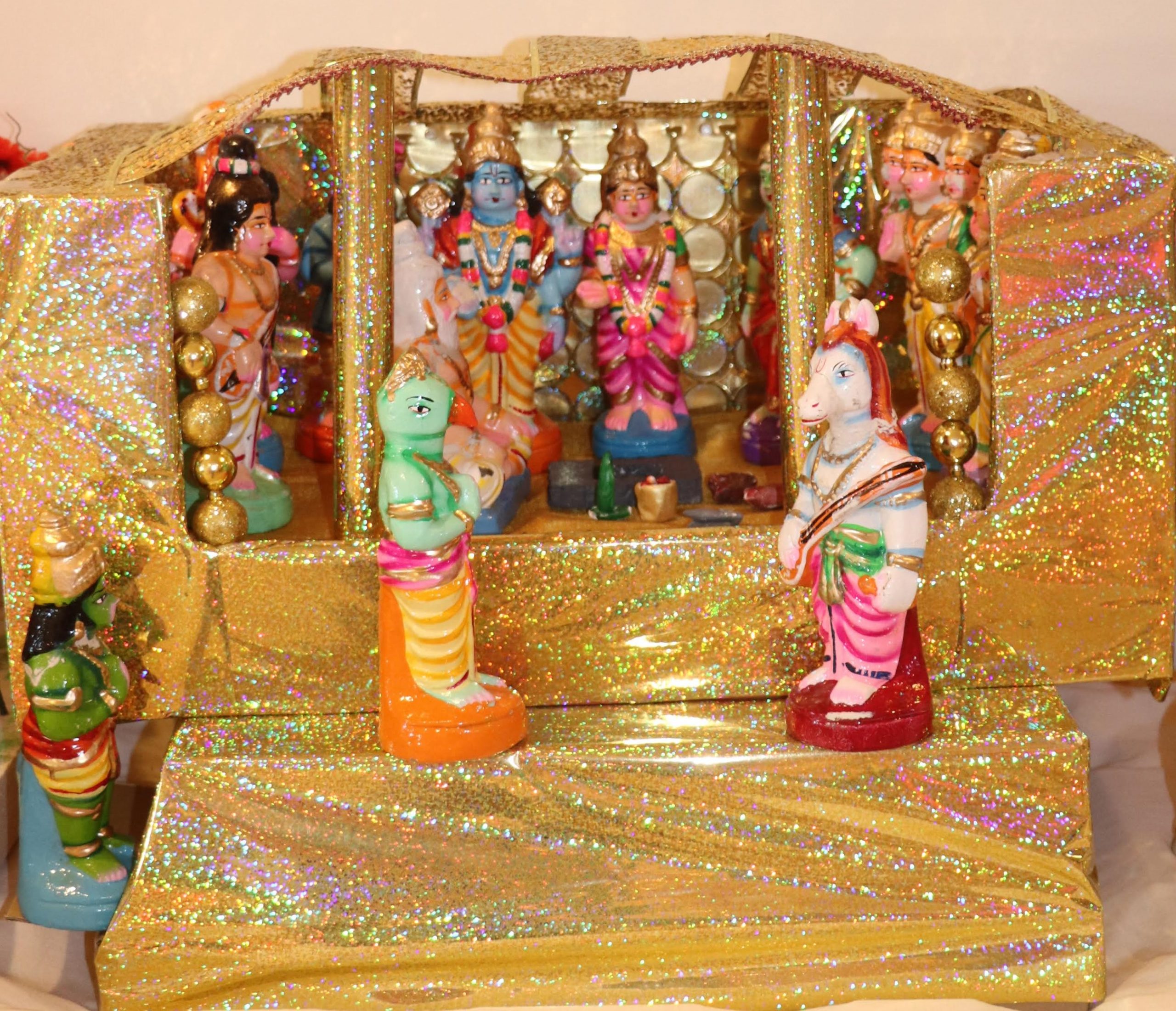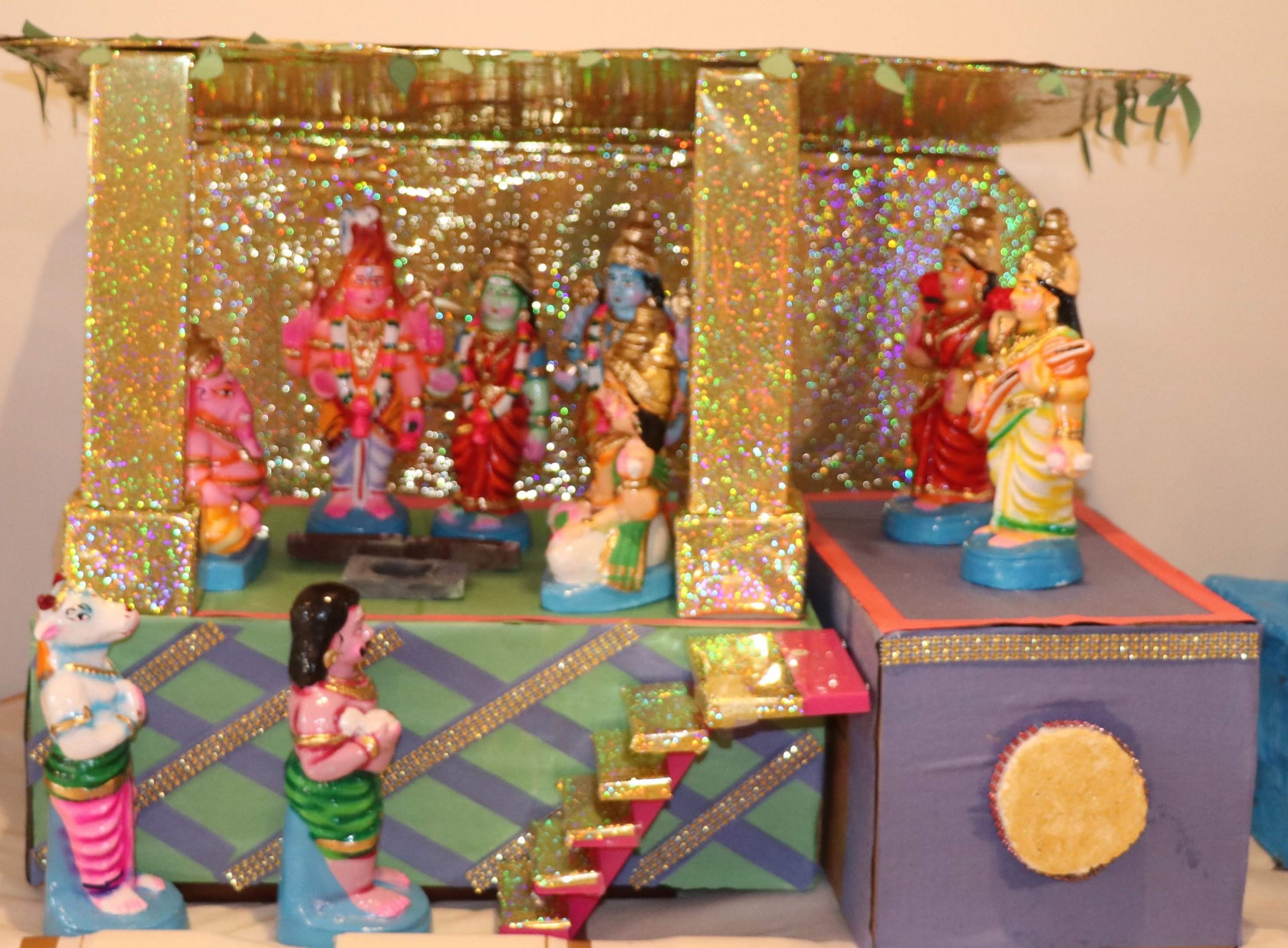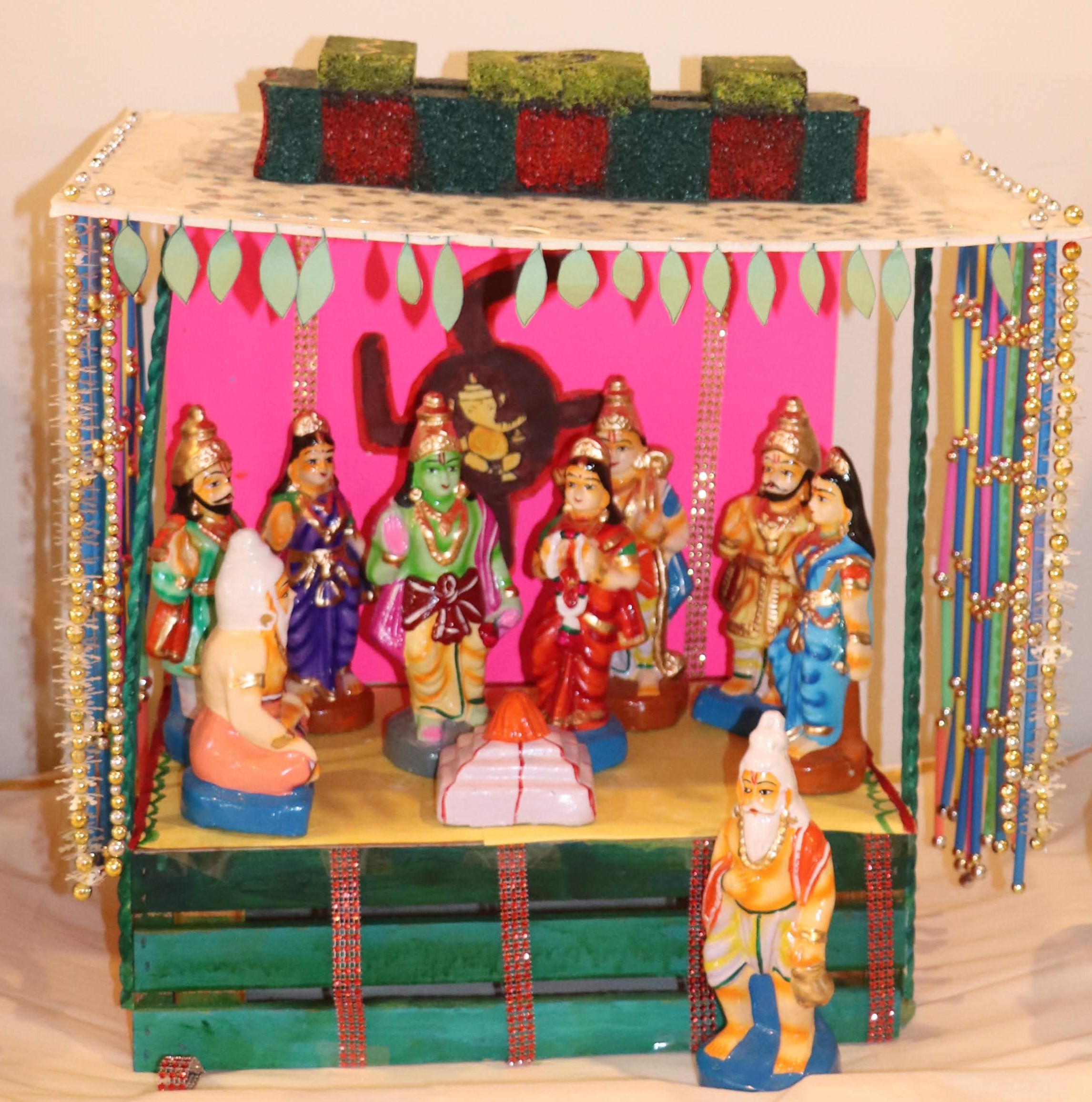Stories behind the marriages of the divinities
Divine Marriages
Marriage has been the greatest and most important of all institutions in human society. It has always existed in one form or another in every culture, ensuring social sanction to a physical union between man and woman and laying the foundation for building up of the family – the basic unit of society.
The Hindus have idealized marriage in a big way. In the patriarchal society of Rig Vedic Hindus, marriage was considered as a sacramental union, and this continued to be so during the entire period. Wife is the ardhangini (half of man) according to Satpatha Brahmana “The wife is verily the half of the husband. Man is only half, not complete until he marries.” The Taittiriya Samhita is to the same effect. Manu declared that mutual fidelity between husband and wife was the highest dharma. According to Mahabharata, by cherishing the woman one virtually cherishes the Goddess of prosperity herself. Wife under Hindu law is not only a “grahpatni,” but also a “dharma patni” and “shadharmini.” The wife is her husband’s best of friends. She is the source of Dharma, Artha, Kama, and Moksha. The husband is known as bharthi. He is supposed to support his wife. He is also known as pati because he is supposed to support her.
Such is the importance of Marriage in Hinduism. We have selected a few scenes of marriages in the hindu mythology and have depicted the stories related to them.
Padmavati Srinivasa Kalyanam
Goddess Mahalakshmi had left Vaikunta to live on earth after the incident where Sage Bhrigu kicked Lord Narayana on his chest ,the place where Mahalakshmi resides. Lord Narayana hastened to apologise to the angry sage and pressed his feet to allay the pain caused to Bhrigu’s leg. In doing so the Lord removed the eye in the foot of the sage, which gave Bhrigu power as to defy the Devas. Sri Mahalakshmi was angered by the action of her Lord in apologising to Bhrigu who committed an offence. She, therefore, left Vaikuntam without heeding the entreaties of the Lord.
After the departure of Mahalakshmi, a forlorn Lord Vishnu left Vaikuntam and decided to stay as Lord Srinivasa in Varaha Kshetra in the Venkata hills, and requested Sri Varahaswami to grant Him a site for His stay. His request being readily granted. Yasoda who brought up Sri Krishna, the was not blessed to witness the marriage of Sri Krishna with Rukmini and she felt very sad. Sri Krishna promised to fulfil her desire in her next birth as Vakuladevi in his next avatara as Srinivasa. In Rukmini’s next birth as Vakuladevi, she was serving Lord Varahaswami when He sent her to serve Srinivasa.
King Akasa Raja who was ruling over Thondamandalam had no heirs, and therefore, he wanted to perform a sacrifice. As part of the sacrifice, he was ploughing the fields when his plough turned up a lotus in the ground. On examining the lotus, the King found a female child in it.Akasa Raja was happy to find the child. He carried it to his palace and gave it to his Queen. At that time he heard a voice from above which said, “Oh! King, tend to it as your child and fortune will befall you.” As the child was found in a lotus, the king named her Padmavati.
In course of time, Princess Padmavati grew up into a beautiful maiden and was attended to by a host of maids. At this time, Lord Srinivasa, who was hunting, chased a wild elephant in the forests surrounding the hills. In the elephant’s pursuit, the Lord was led into a garden, where Princess Padmavati and her maids were picking flowers. Lord Srinivasa and Padmavati met and fell in love with each other.
Vakuladevi realised that Srinivasa would not be happy unless he married Padmavati. She offered to go to Akasa Raja and his Queen and arrange for the marriage. Having consulted Brihaspati and heard from his Queen about the prediction of a fortune-teller and the arrival of the messenger from Srinivasa, Akasa Raja decided to hand his daughter in marriage to Srinivasa.He asked the palace purohits to fix a muhurtam for the marriage.Akasa Raja informed his ministers and other officials of his plans. Immediately, a letter was drafted requesting Srinivasa to come and marry the Princess.
Akasa Raja entrusted the delivery of the letter to Sukamahamunin. Suka went to the Venkata Hill with Vakuladevi. He presented the patrika to Lord Srinivasa, who was very happy. The Lord sent his garland for Padmavati through Suka. Kubera lent money to Lord Srinivasa to meet the expenses of the marriage.

Meenakshi Sundareswarar Kalyanam

Seeta Rama Kalyanam
The country of Mithila was ruled by King Janak who had four beautiful daughters of marriageable age. Amongst these, Sita was the perfection of purity, grace, modesty and beauty.
King Janak had arranged for Sita’s marriage with the condition that she would marry that brave and powerful prince who would break the Bow of Shiva. This Bow of Lord Shiva was unbreakable for ordinary mortals! For the selfish person, it was not approachable. Amongst the poor in spirit and cowards, It created fear and terror.
Sage Viswamitra had been travelling along with Rama and Lakshmana , two of the four princes of Ayodhya. They were in Mithila the time the swamvara (challenge) was announced. Sage Viswamitra made Rama to participate in this proposed marriage-ceremony — Swayamvar — as is known.
A very beautiful account is given in Ramayana regarding the stay of these princess as the guests of Janak. How the accidental meeting of Ram and Sita leads to blooming of love; how Sita vows in the heart of her heart to marry Ram and Ram alone, etc.
And the day of reckoning dawns! One by one the princes from various states and kingdom try their luck in attempting to lift and break that Bow of Shiva. But was that ever possible! Was that ever destined!
Even the most powerful amongst all the kings, all over the world, the great Ravan of Lanka could not even move the bow one inch above the ground! Everyone laughed at this tragic show and defeat of Ravan .Ram succeeded though in the swamwara.
At last it was the turn of Ram. With due humility and respect, Ram saluted the Bow (i.e. Shiva Himself), and prayed to give him strength and courage to attempt and succeed in this almost impossible task. In one attempt Ram lifted and set apart the bow in two!
The whole Royal Court was filled with shouts of ‘Glory Unto Ram, Victory to Ram’, etc. Thus, in the most wonderful setting, the auspicious marriage of Ram and Sita took place. Along with Ram, his three brothers also got married to the three sisters of Sita. Four sons of King Dasharath married four daughters of King Janak!

